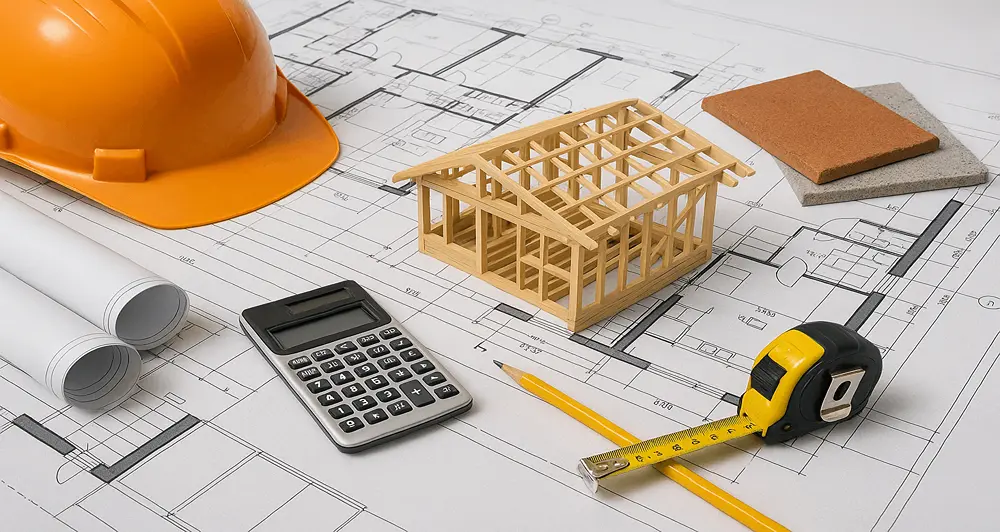Detailed planning and feasibility assessment form the backbone of a successful pre-construction process, ensuring accurate cost estimating, scheduling, and risk mitigation. Studies by the Construction Industry Institute show that effective pre-construction planning can reduce project overruns by up to 20%. This structured preparation enhances communication among architects, engineers, and contractors before breaking ground.
Initial Feasibility and Site Assessment
Starting with a thorough site evaluation sets the foundation for any build, identifying potential hurdles like soil instability or access issues right away. Geotechnical surveys and zoning checks during the pre-construction process reveal environmental constraints, reducing risks and confirming viability through detailed topography analysis and regulatory reviews.The Preconstruction Phase: A Deep Dive into the Precon Process
Design Development and Concept Planning
Architects and engineers team up early to craft designs that match client visions while incorporating green standards, making projects more resilient. Using BIM tools in this pre construction phase optimises layouts, turning ideas into practical plans that boost efficiency and cut future adjustments in WIP construction stages.
Budget Estimation and Cost Planning
Detailed budgeting in the pre-construction process guards against unexpected expenses by factoring in materials, labour, and contingencies upfront. AIQS data indicates 27% of projects suffer overruns from poor initial estimates, so precise forecasting with quantity takeoffs keeps everything on track and stakeholders informed.
Cost planning also involves breaking down elements for transparency, allowing adjustments before commitments. This approach in preliminary planning in construction ensures resources align with goals, preventing scope creep and fostering trust among teams.
| Cost Item | Typical Range (AUD) | Estimation Tool |
|---|---|---|
| Earthworks | 50,000 – 200,000 | CostX |
| Structural Materials | 300,000 – 1,000,000 | Cubit |
| Services | 100,000 – 500,000 | CostX |
Risk Identification and Mitigation Strategy
Project teams pinpoint threats like material shortages or weather disruptions through collaborative sessions and scenario modelling, turning uncertainties into manageable plans. In Construction Project Management, this pre planning in construction step strengthens resilience, with studies showing it can slash delays by up to 25% via targeted strategies.
Tender Preparation and Contractor Selection
Crafting tender documents with clear specs and prequalification steps draws in capable bidders, ensuring the right fit for quality delivery. This phase in the pre-construction process evaluates proposals fairly, focusing on experience and compliance to build a reliable partnership from the start.
Once bids arrive, selection hinges on balanced criteria that go beyond price alone.
- Cost competency: Assessing value-for-money proposals to avoid low-ball risks.
- Safety record: Prioritising firms with proven low-incident histories for site security.
- Technical capacity: Evaluating expertise in similar projects for smooth execution.
This method enhances fairness and keeps timelines predictable.
Legal and Regulatory Approvals
Securing approvals early avoids costly hold-ups, from development applications to environmental nods under local rules. Navigating NCC standards and council requirements in the pre construction plan is key, as 15% of Australian projects face setbacks from incomplete paperwork, so consulting experts streamlines compliance.
Pre-Construction Scheduling and Timeline Setup
Building a robust schedule with Gantt charts and key milestones coordinates tasks like procurement and approvals seamlessly. This construction pre planning element prevents overlaps, boosting efficiency by 20% per ACIF insights, and provides a clear roadmap that adapts to real-world changes without derailing progress.
Value Engineering and Design Optimisation
Reviewing designs for smarter alternatives enhances performance without inflating budgets, using lifecycle analysis to weigh long-term benefits. In the pre-construction process, this refines choices like insulation or layouts, ensuring builds are sustainable and cost-effective over time.
Teams apply proven techniques to maximise outcomes.
- Alternative materials: Swapping high-cost options for durable equivalents that maintain quality.
- Modular design: Prefabricating components off-site to speed assembly and reduce waste.
- Supply-chain efficiency: Sourcing locally to cut transport fees and support timelines.
These practices trim operational expenses significantly.
How Pre-Construction Planning Prevents Long-Term Extra Costs?
Effective pre-construction planning spots design issues early, dodging rework and inflated estimates that haunt later phases. By integrating sustainability and precise forecasting, it lowers maintenance and energy bills throughout the building’s life, delivering lasting value and keeping clients ahead financially.


